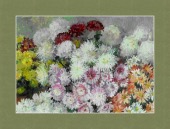NEEDLE INJURY AT WORK & HIV CONCERN

Sharps injuries or blood/mucous membrane exposure poses a risk of transmitting bloodborne pathogens such as hepatitis and HIV.
The exposure site should be washed immediately with soap and water, and mucous membranes should be flushed with water.
The average risk for HIV transmission after a percutaneous exposure to HIV-infected blood is 1 in 300. After a mucous membrane exposure, risk is 1 in 1000.
Start antiretroviral PEP (postexposure prophylaxis) as soon as possible (e.g. within hours) after exposure and continue for 4 weeks unless source is found HIV-negative.
Two-drug therapy is used if the HIV status of the source is unknown (e.g. needle from a sharps container). Examples include zidovudine/lamivudine (Combivir) and tenofovir/emtricitabine (Truvada).
Additional drugs (e.g. lopinavir/ritonavir – Kaletra) may be necessary if the exposure is severe (e.g. deep puncture) or the source has symptomatic HIV infection.
